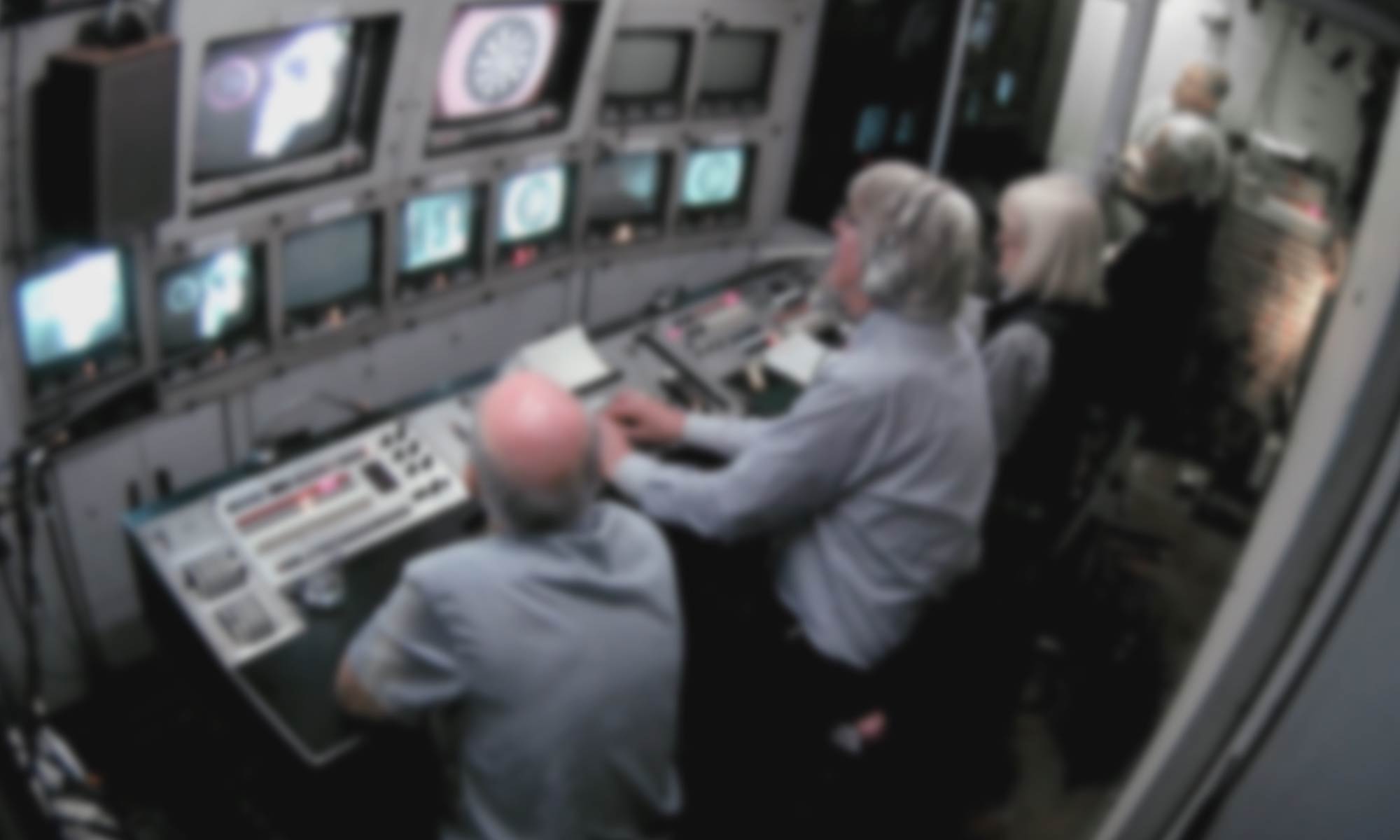The lighting is reaching its conclusion. The electrician consults with the cameraman who is still seated by the camera, monitoring the results of the electrician’s work. Offered the option of the final redhead “bashing in”, the cameraman opts instead for a redhead “down where John is” (i.e. the camera assistant) with its doors closed to put “a bit of Mongolian” on the curtains. This is a dense use of a jargon that has since probably vanished from usage.
The sound recordist has temporarily left the scene, probably to find substitute headphones. When he returns, he is initially hardly visible in our footage as he begins to check the Nagra He is beginning to have problems with it, problems that he keeps to himself for another three minutes as he methodically checks where the source might be. He is not receiving a sync pulse from the camera which will ensure that the speed of the film through the camera and the speed of the tape through the Nagra will be exactly the same, ensuring that sound and picture remain perfectly in synchronicity. He asks the cameraman to run the camera to test whether a pulse will be received by the Nagra, and the director interjects, misunderstanding the question, that this is better done with the interviewee in place: he assumes that the sound recordist has functioning equipment by this stage and just wants to check the sound level and balance. However, there is a serious problem. The recordist moves over to the camera to check the sync pulse generator and then takes off his headphones with a shrug of his shoulders.
Everyone else is moving to a conclusion of their preparations. The assistant has emoved the loaded magazine from the bag and begins to show how to thread it through the gate, and onto the take-up side that will contain the exposed filme. He also explains about tape and labelling, which enable the onward identification of the exposed film and protect it from tampering whilst it is being used.
After 18 minutes of preparation, and prompted by the simulation director, the electrician checks his final light with the director, and declares “that’s all the lamps”. He is indicating that his preparations are over. As the assistant returns the loaded magazine back to the camera, they engage in an exchange about an anonymous unit manager who insisted that all lights sent on a job should be used, followed by a story about camera tape and the BBC’s influence on the film manufacturer Kodak. The cameraman, however, has realised that the sound recordist has a problem and begins to help out by checking cables. The director is trying to move things along, and thinking that everything will be ready once the magazine is back on the camera, asks whether he should bring the ‘professor’ in and “light him for real”. The sound recordist declares that “we’ll have to sort out my little problem first”. The camera assistant appears not to have noticed this and continues the process of putting the loading bag away, an important procedure as it has to remain clean and dust free inside.
A minute later, the Nagra still appears not to be working, despite running the camera again to generate a sync pulse. Then the camera assistant intervenes, since it was he who supplied the Nagra for the simulation from his extensive collection of historic equipment. He asks the recordist whether he has got sync, and explains that the Maltese cross (which indicates sync) will not show unless the controls are “in the record position”. This cues a general debate attempting to problem solve including the electrician’s joking suggestion that the batteries might be missing. The camera assistant does not intervene at the controls of the Nagra, however, but continues with his procedure of replacing the magazine on the camera. The director reminisces about the problems of sound recording before the introduction of the sync pulse generator, when camera and tape recorder had to be linked by a physical sound cable. “That’s where we are now” says the camerman, who is aware that a faulty sync cable may be causing the sound recordist’s problem. Before replacing the magazine, the camera assistant cleans the camera gate (where the film passes behind the lens) by blowing air on it, producing some banter with the director who demonstrates how he did this wrongly for some time. The director intervenes by raising the subject of the amount of film in the magazine (and hence how long they can shoot), and emphasising the cost of a roll of film at £100 plus processing. The assistant begins to replace the magazine on the camera body which takes a couple of tries before it is running satisfactorily.
